If you’ve found your way here, you probably don’t need convincing that it could be a good idea to teach your child to cook! If you do need some persuading, there are a myriad of reasons why it is beneficial for your child. It can introduce them to new foods and flavours, encouraging healthy eating. It helps to teach maths, literacy and science skills and is a great creative outlet too! Of course, it is also a life skill. With a bit of luck, they’ll become inspired adults, capable of feeding themselves well rather than solely relying on sandwiches and ‘student foods’ like instant noodles!
1. Keep the recipes simple
You’re probably wondering what things a child can cook. The trick is to start off simply with something like pizza or muffins. Once they become a little more au fait with skills such as cutting and mixing, it’s easier to get them involved with making family dinners like lasagne. When my daughter was almost 3, she was able to make an apple crumble almost independently! We made it a lot, so in the end all she needed was a little instruction from me to remind her what to do. She did all the physical cooking (although I put it in the oven, of course!) These little people are often capable of more than we give them credit for!
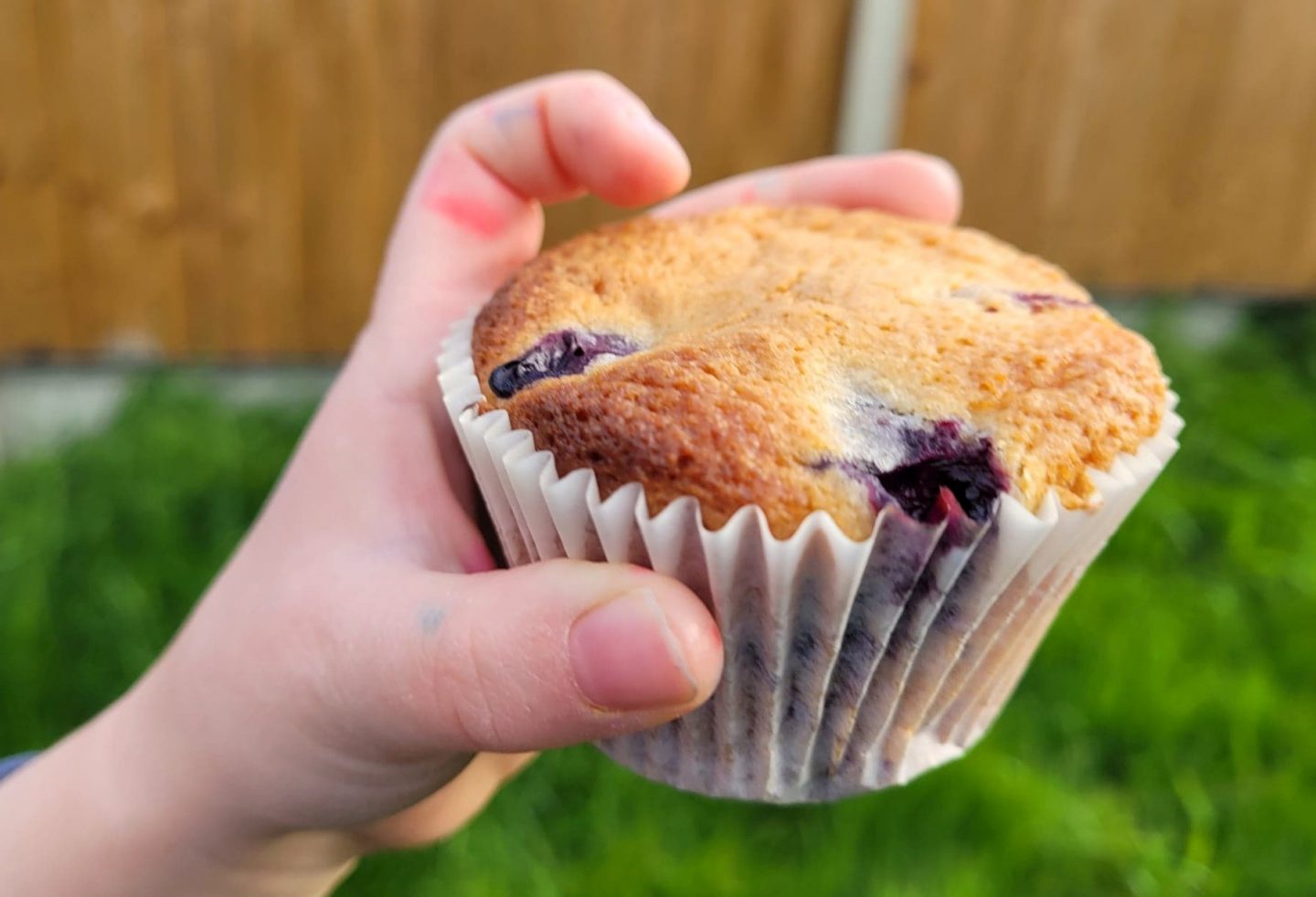
2. Give yourself time
Teaching your children needs to be a fun experience, without time constraints. With children, everything always takes longer than you would expect it to! Needless to say, it will take quite a while longer than if you were to cook something on your own. Save teaching your child to cook for weekends or school holidays, or if by some miracle you have time to spare on a weekday morning or evening, seize the moment!
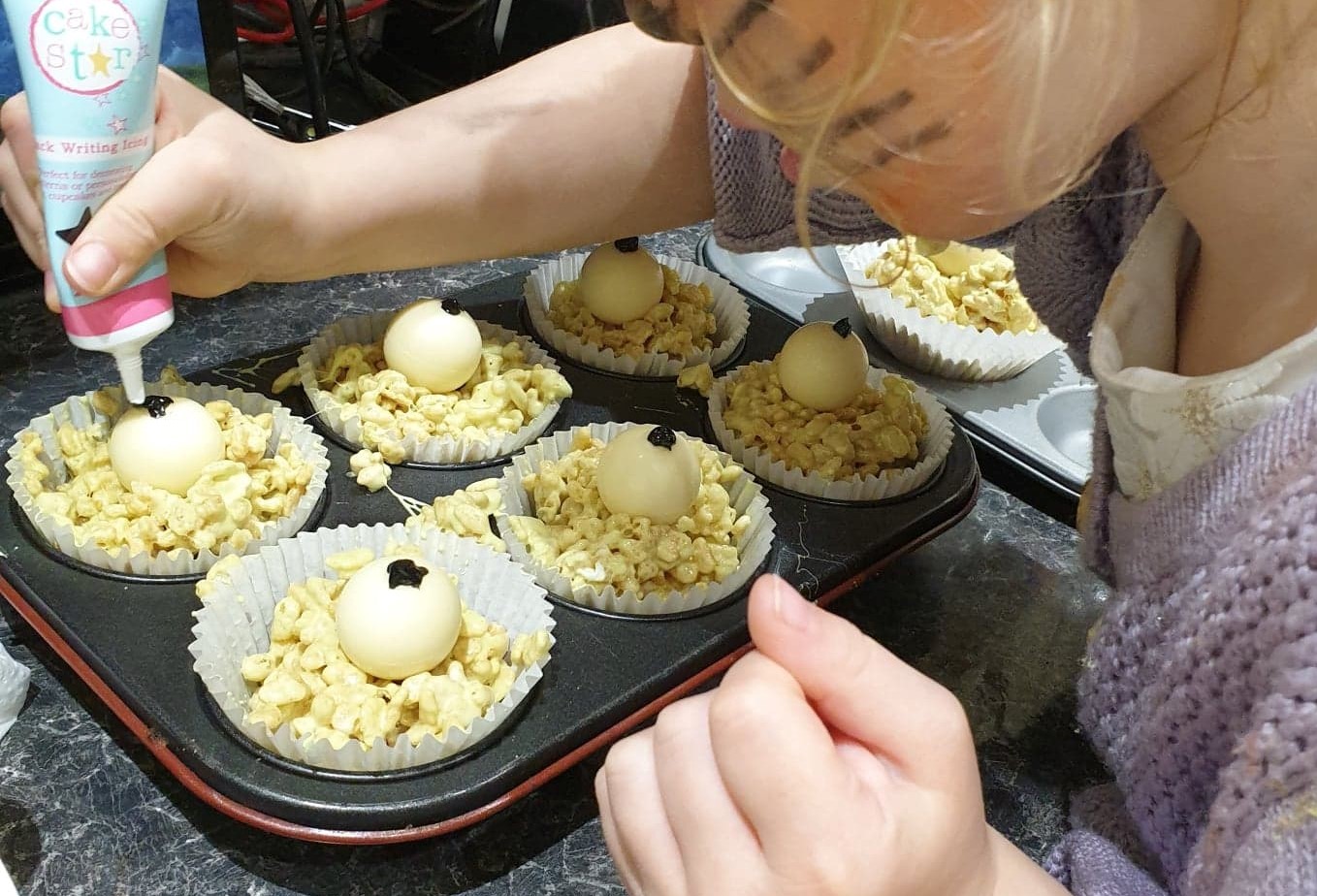
3. Be patient
A lot of patience will likely be needed for multiple reasons! As such, make sure you’re not too stressed or busy when you start cooking with your child. You need to be in a good frame of mind, not already close to snapping.
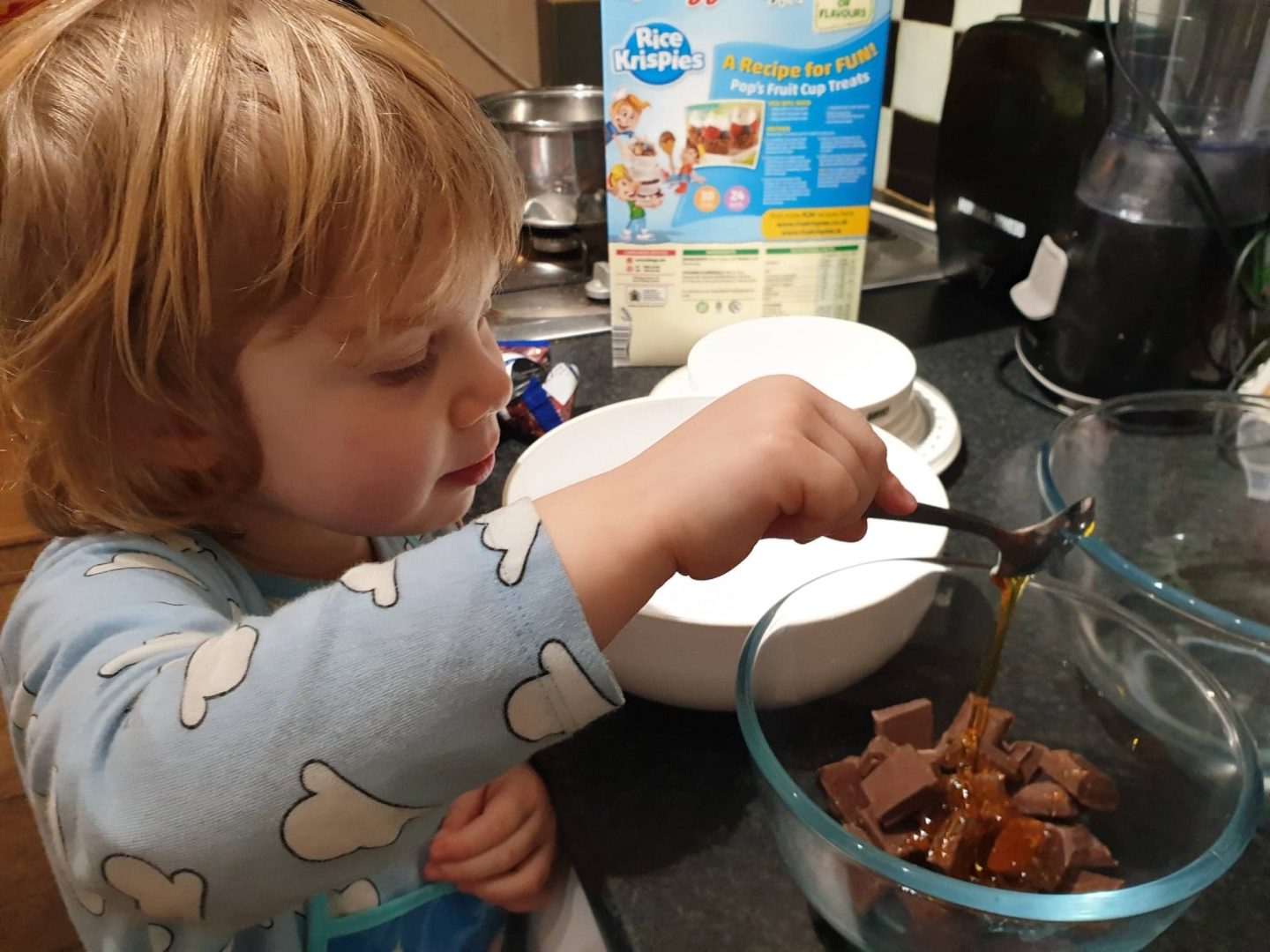
4. Keep it clean
Educate your child on the importance of good hygiene when cooking. Prompt them to wash their hands before cooking until it becomes second nature. Make sure they also know the importance of washing their hands at necessary points during food preparation too, such as when they’ve handled raw meat. After all, part of the fun of cooking for children is getting family and friends to try what they’ve proudly created. If you know good hygiene has been upheld, you’ll feel a lot more comfortable eating!
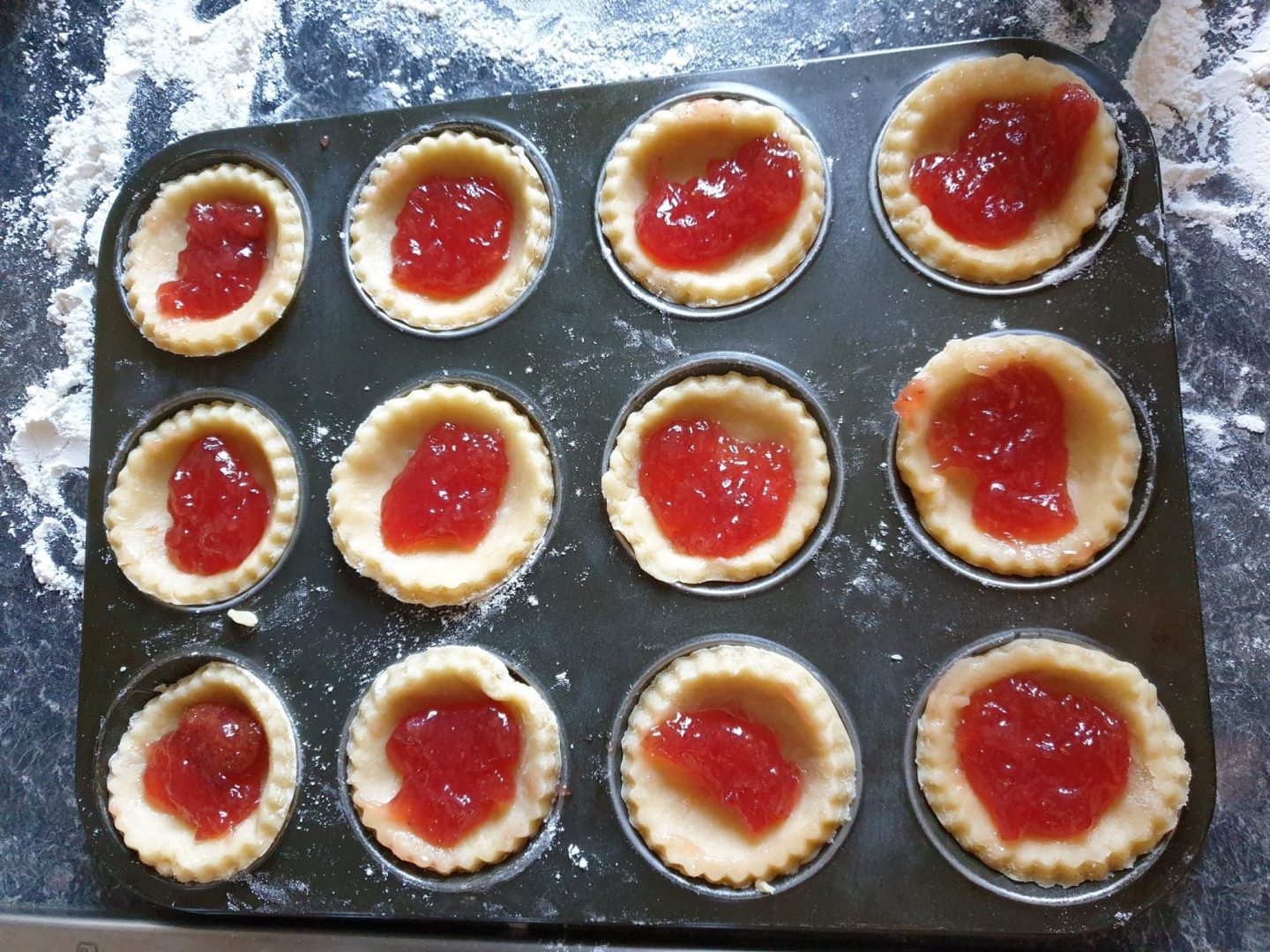
5. Lay down some rules
Following on from the ‘wash your hands first’ rule, lay down some other rules for the kitchen. You don’t want your fun cooking session to turn into a trip to A&E! Explain the dangers of kitchens, such as hot ovens, sharp knives and potential spillages. Make sure they know not to run and that the kitchen is definitely not the place for fighting with your siblings! Also make it clear that an adult needs to operate the oven and that they should keep a safe distance from it.
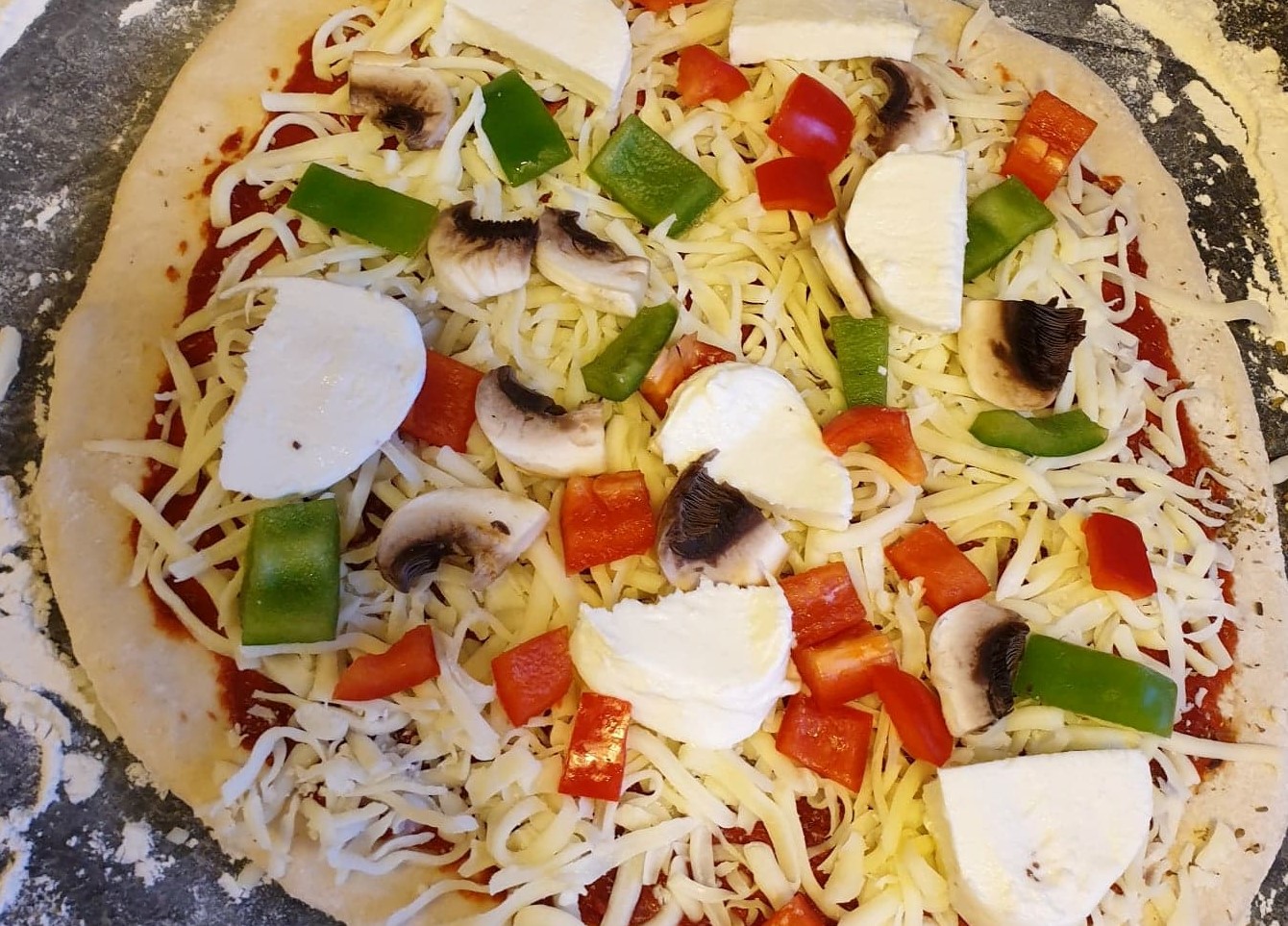
6. Prepare for mess
Your children will inevitably make more mess than you in the kitchen, but don’t let this put you off! Yes, they might get flour everywhere, but they will get so much out of the experience! We’ve already touched on some of the benefits of cooking for children – and it’s also a great sensory activity! Besides, sometimes a bit of mess is all just part of the fun!
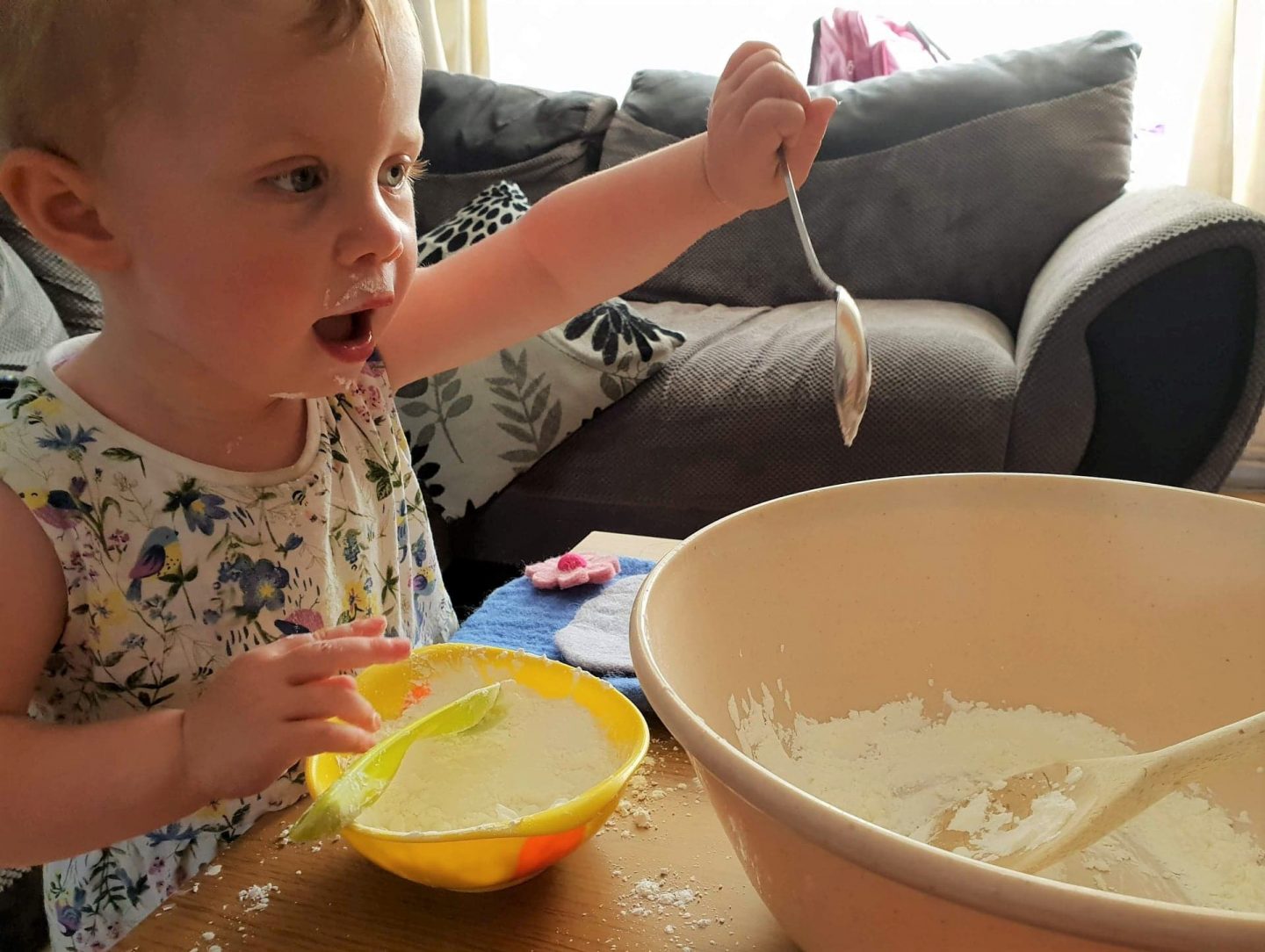
7. Obtain any necessary equipment
You might not actually need extra things to start cooking with your child! They can use the usual utensils you use and cut things up using a butter knife! My daughter was cutting up fruit and vegetables quite well from the age of about two and a half. We actually bought her a special knife for children which was corrugated in a particular way to allow it to cut well, without being sharp and risking injury. We also had a learning tower for her so that she was tall enough to reach the worktops whilst being contained and therefore safe from falling.
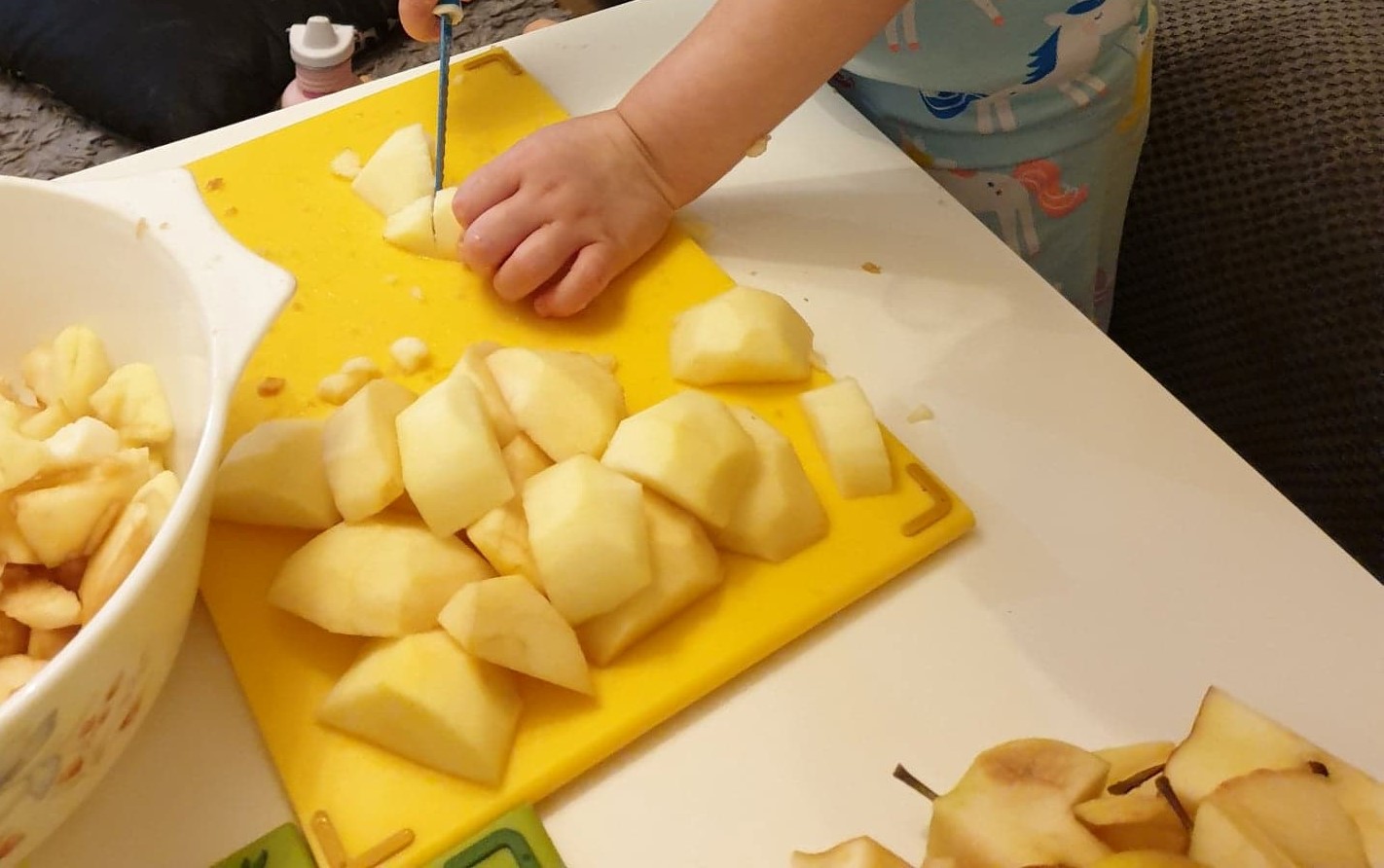
8. Give them age appropriate tasks
Allow your child to challenge themselves, don’t make things too easy. Children know when they’re being fobbed off! Foster their independence by staying as hands-off as you can. When you can see they might need some help, ask whether they would like it before going straight in and taking over! BBC Good Food has a great list of appropriate tasks depending on your child’s age group.
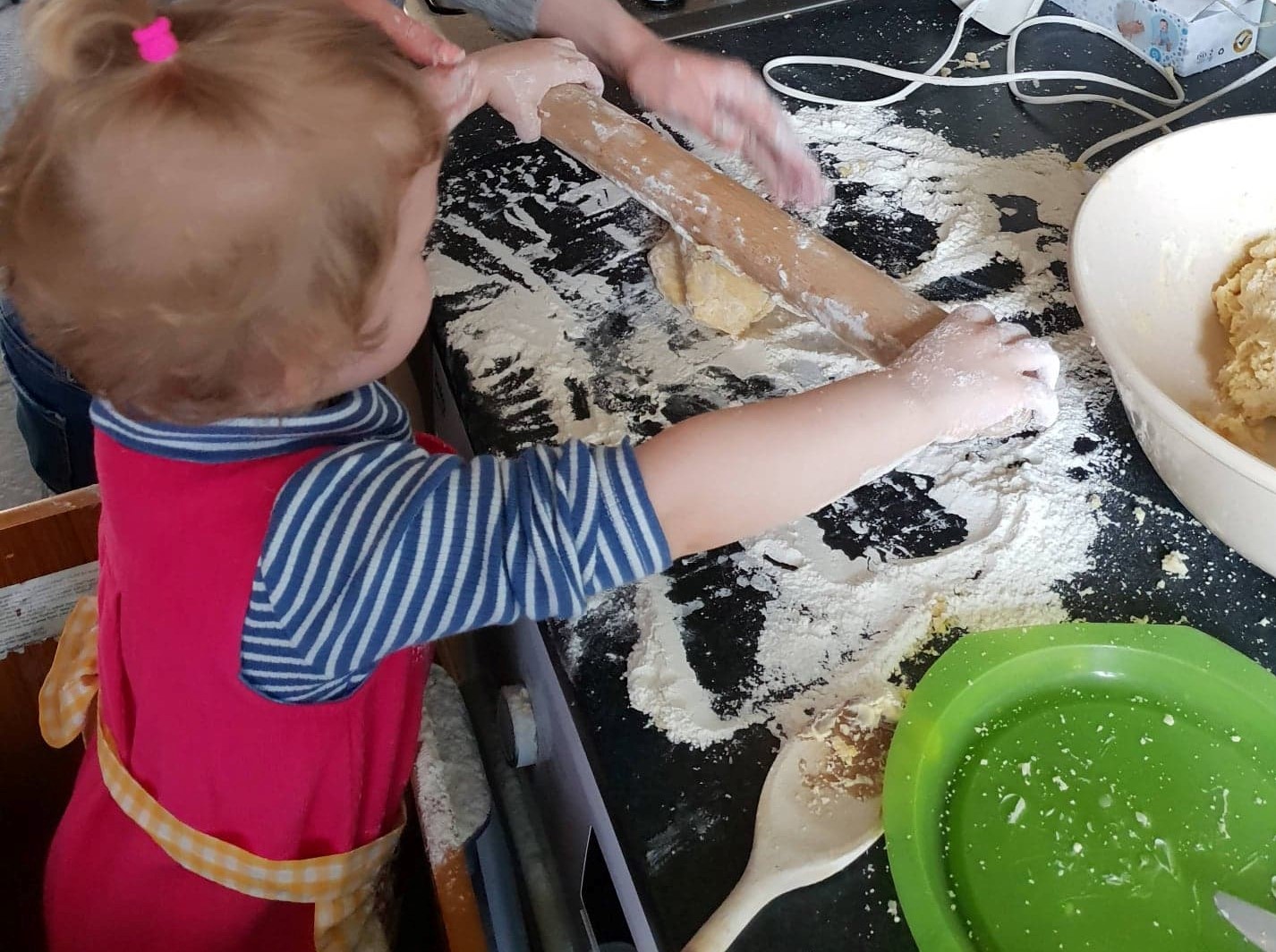
9. Make it tasty
Half the fun of cooking is enjoying eating the food afterwards! Therefore, choose things that your child will like. If you want to encourage them to try something new, perhaps try making different versions of things. For example, make some cheese muffins with and without olives in. Perhaps even allow them to choose the recipe they want to make!
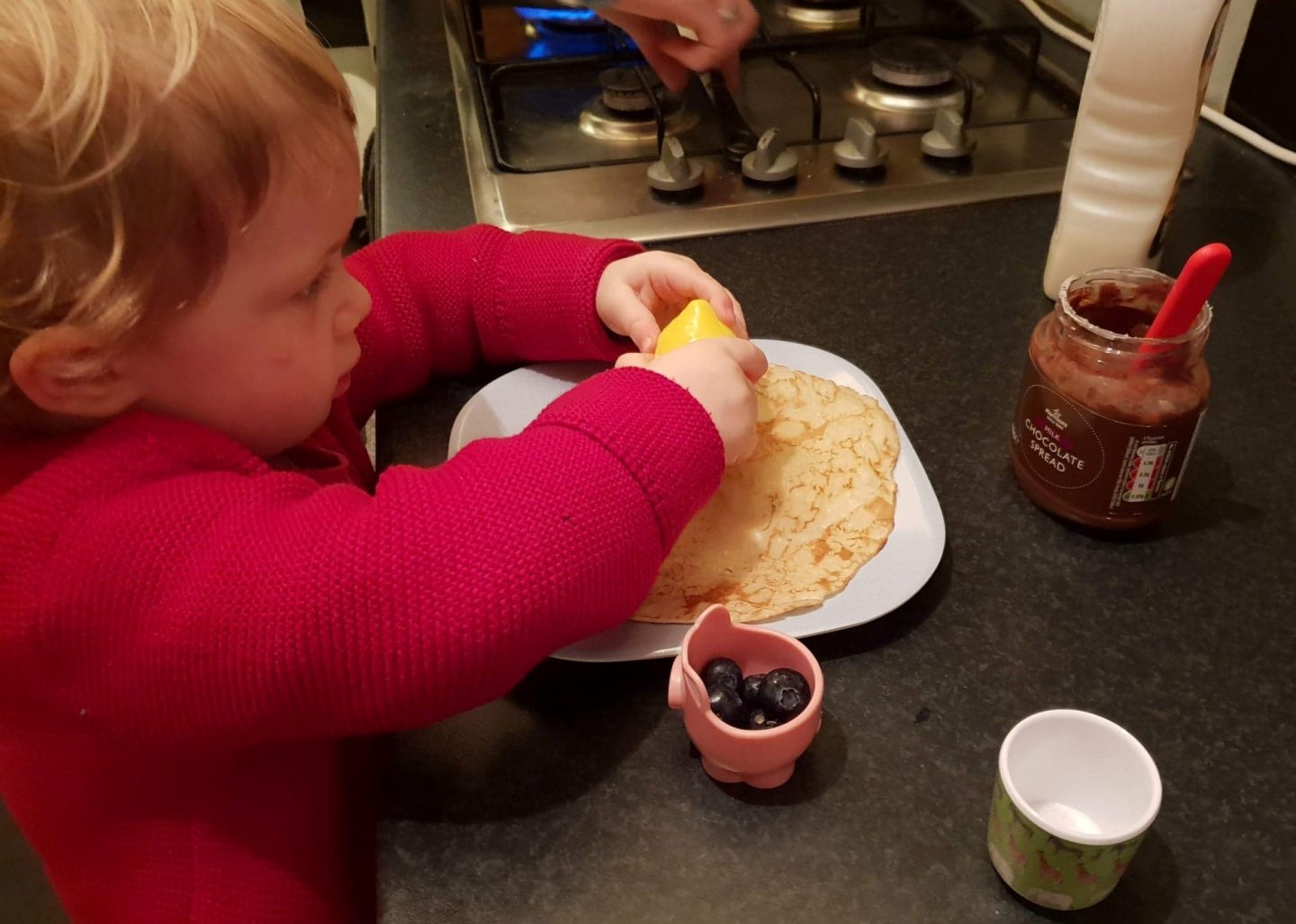
10. Keep it fun
Learning doesn’t feel like learning when it’s fun! Embrace and enjoy the experience! Consider getting your kid a cute apron of their choice buying themed items, like ghost and bat cutters at Halloween. I also enjoy taking photos during cooking so that we can look back at the experience!
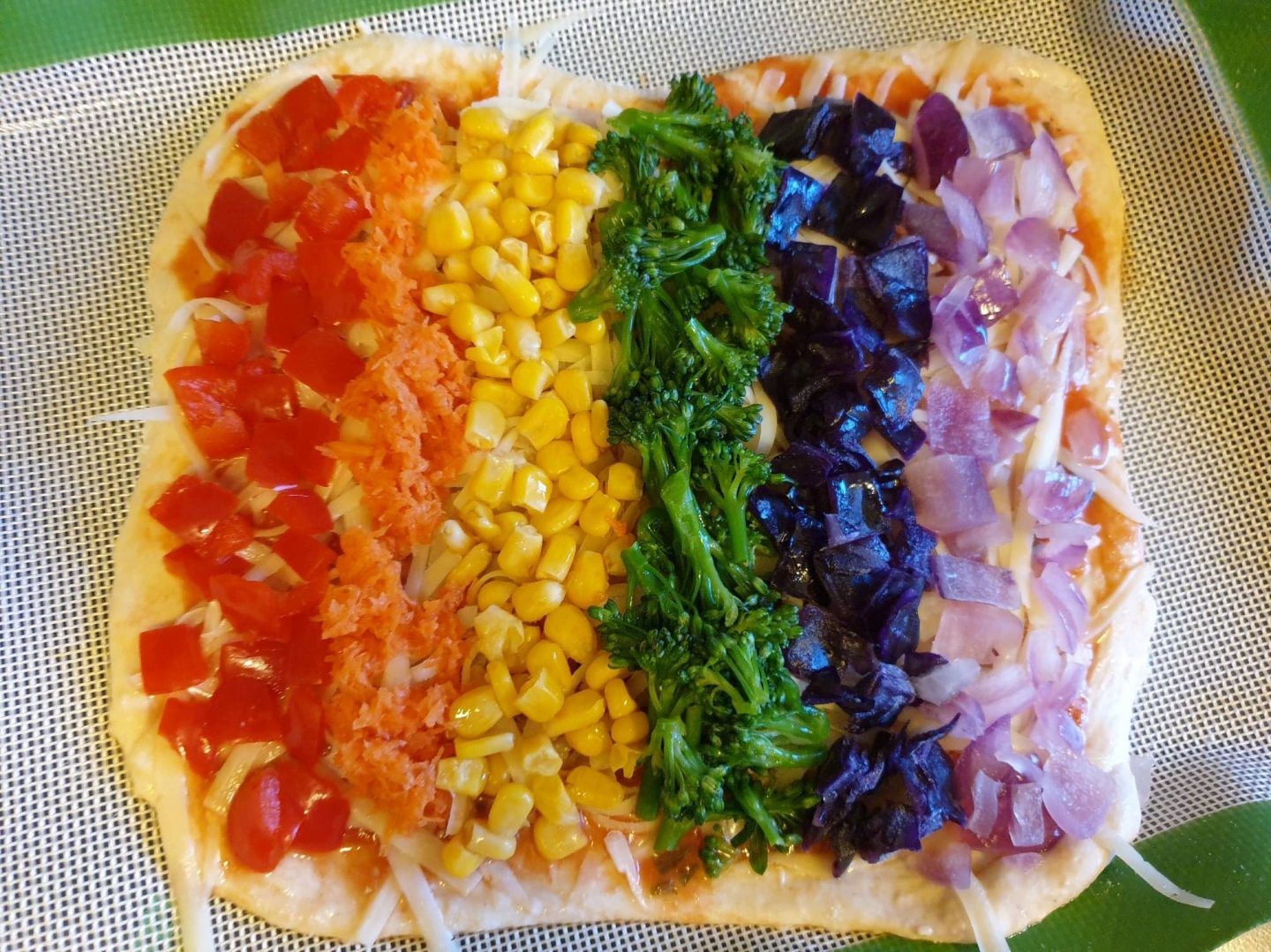
My son, Reuben, is now 16 months old. I’m so excited to start involving him in cooking in a couple of months too!
Do you enjoy cooking with your children, or maybe you have some more tips? I’d love to hear from you in the comments!
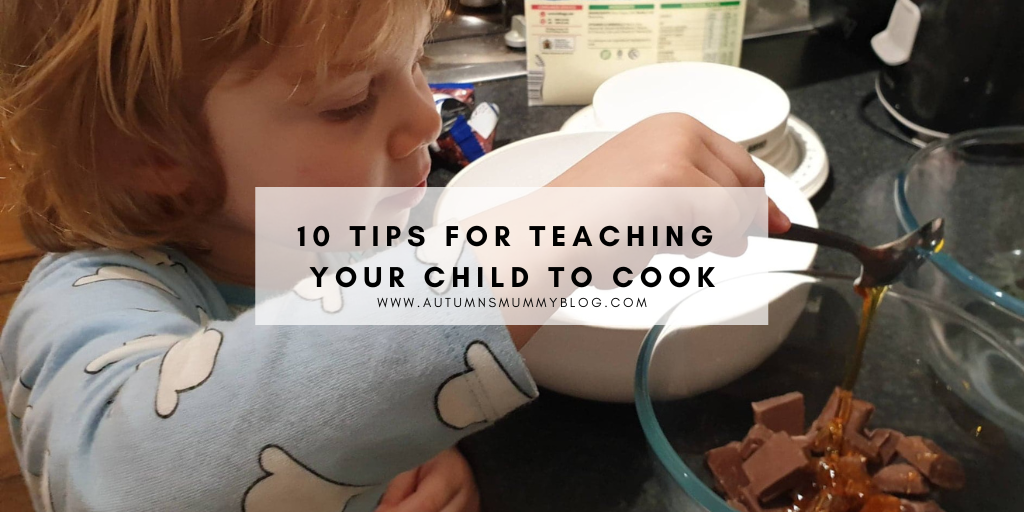
I loved cooking and baking with my girls and always have. They try to cook without me but I always muscle my way into the kitchen and offer help. hehehe It is good to start off simple. Cooking is a good life skill for children to have. x